Forsythia Bush - Learn How to Care for and Trim Forsythia Plant
Forsythia is a plant in the Oleaceae family. The bush originates in Asia, but thanks to its popularity and adaptation capabilities, it's common nearly all over the world. Interestingly enough, there are 8 types of forsythia. Has one caught your eye, and you wish to have it in your garden? It's possible. But first check its needs and learn what you should know on taking care of forsythia.

Forsythia - what kind of plant is it and what does it look like?
Forsythia is a very popular shrub. Originally, it comes from Asia, but thanks to its adaptability, it can be planted anywhere in the world.
The bush blooms in early spring, developing small yellow flowers. A forsythia in bloom becomes a beautiful plant. Interestingly enough, only flowers appear on the shrub, instead of leaves - it’s the characteristic feature. It’s because forsythia blooms earlier than its leaves can grow.
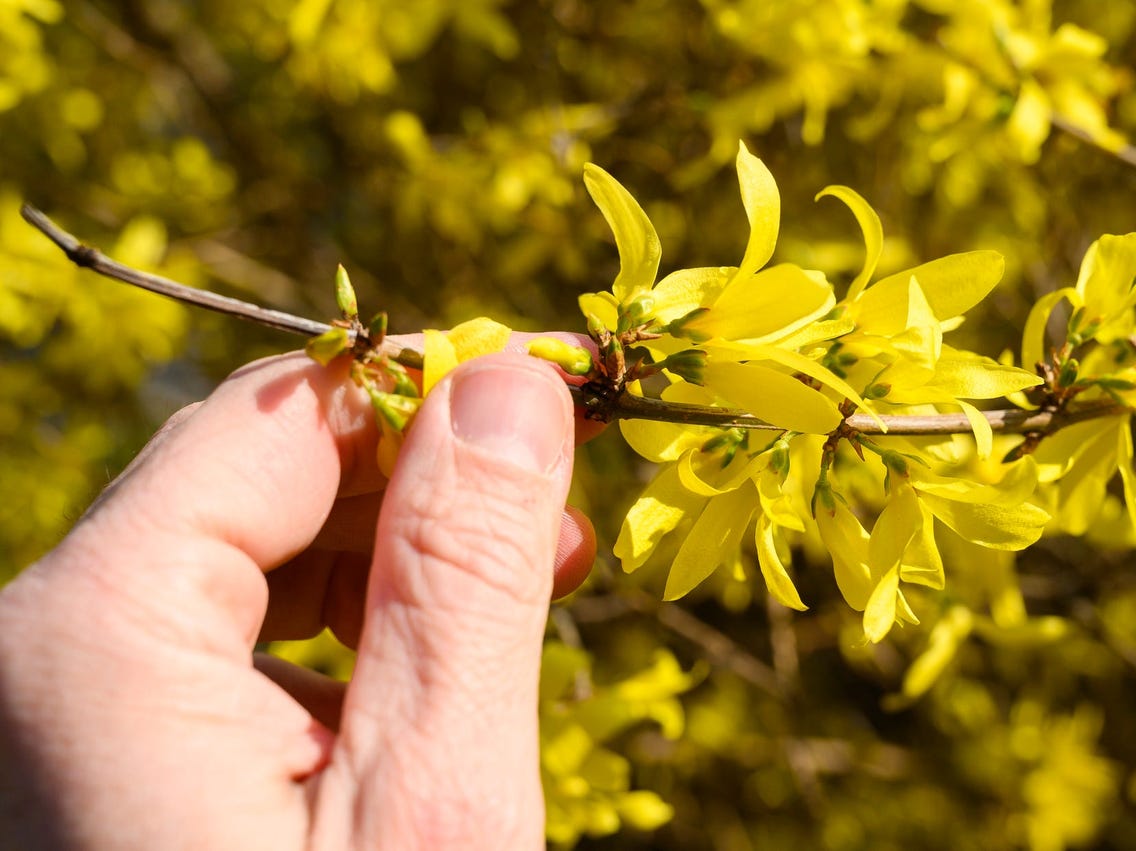
When does forsythia bloom?
Forsythia blooms in early spring - a lot depends on the weather conditions and temperatures which affect development of the flowers. All branches of this ornamental shrub get covered with tiny flowers - usually yellow. There are other types of the plant as well. A pink forsythia is rarer, but equally amazing.
Yellow forsythia flowers are often used during Easter. They are typical Easter basket decorations.
Forsythia is a sterile plant - the flowers don’t produce pollen, and therefore, don’t attract insects.
What are the types of forsythia?
Yellow forsythia is the most popular type. It typically appears in gardens. Pink forsythia is another color of this shrub - but it’s rarer.
There are many types of forsythia. Border forsythia and weeping forsythia are the most popular ones.
The following forsythia varieties are popular in different parts of the world:
- European forsythia,
- Japanese forsythia,
- Korean forsythia,
- forsythia ‘Giraldiana,’
- forsythia ‘Lynwood,’
- forsythia ‘Maluch,’
- forsythia ‘Golden Times,’
- forsythia ‘Courtacour,’
- forsythia ‘Spectabilic Variegated,’
- forsythia ‘Scpecrabilis.’
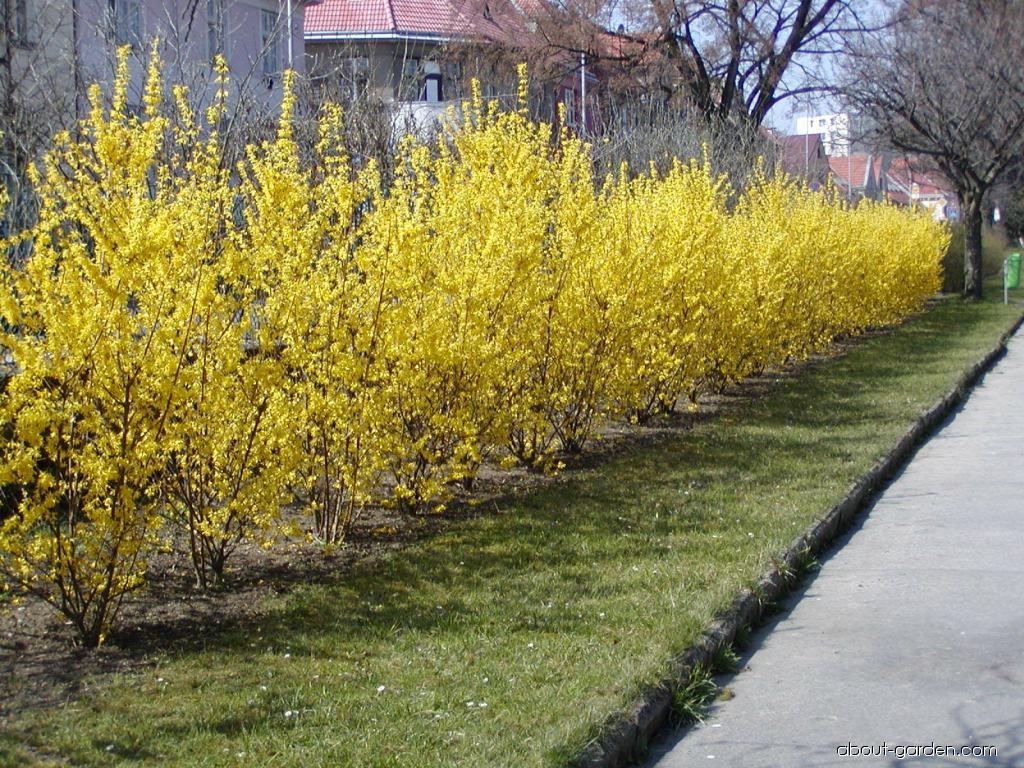
Forsythia - health benefits
Forsythia is valued not just for its attractive appearance. Few people know about its additional benefits. This shrub is precious thanks to the health benefits it carries. The flowers are rich in rutozide, which supports vitamin C. Combined, the substances improve one’s immune system. What’s more, the flowers of this shrub lower glucose levels in the blood and support diuresis.
What is the best soil for forsythia?
Pink forsythia, or weeping forsythia - regardless of the type you pick - each of the plant’s variety needs the right growing conditions. The bush grows best in a lightweight and moist soil. Make sure it has the right pH - between 6.8-7.7. Without the proper conditions, a forsythia plant wilts if there’s no precipitation.

How and when to plant a forsythia bush?
Just like other garden shrubs, forsythia needs to be planted properly. The right season is the most important factor. Plan planting for early spring or late autumn, when the ground is wet. It makes the perfect conditions for forsythias.
After picking the spot for the plant, dig a large enough hole - it should be at least twice as big as the pot in which the shrub grows. This way, you make sure the roots have enough space for growing, which affects the wellbeing of the plant.
Forsythia watering - how often should you water the plant?
A forsythia bush requires intense watering - especially during the first stage of its growth. Also, water the plant when the temperatures outside increase significantly.
If the bush is mature, you don’t have to water it regularly. The plant can handle itself, provided it grows in a well-picked spot. Drought periods are the only exception - in this case, make sure to water your forsythia plant every 2-3 days. During this time, the plant cannot draw water from the ground.
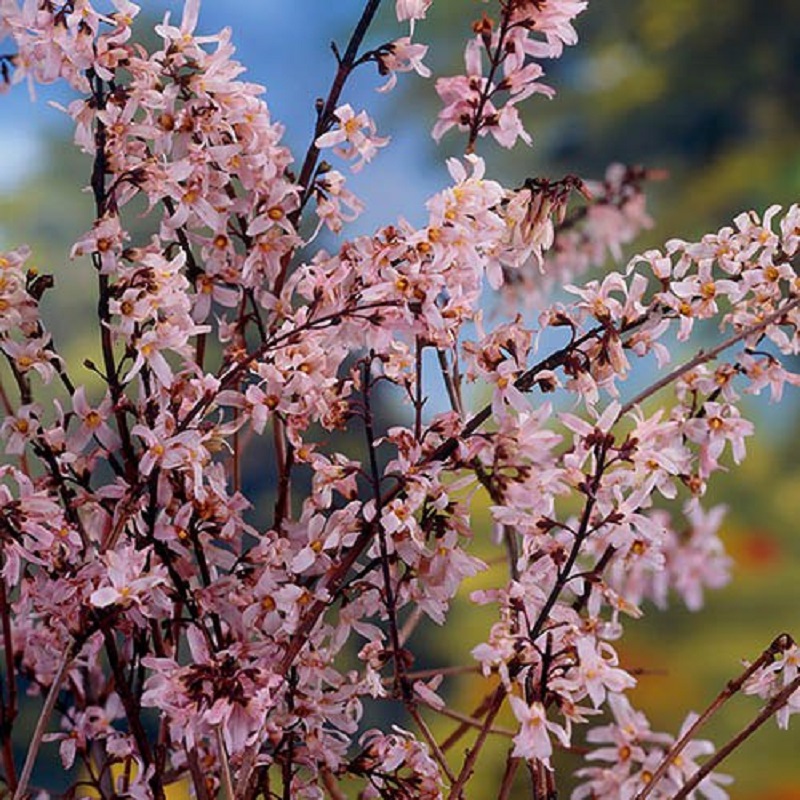
Do you have to fertilize forsythia bushes?
A forsythia requires periodic fertilizing. But a lot depends on the soil the bush grows in. If it’s rich in minerals, additional feeding can be omitted, as the plant will grow perfectly in such conditions. You can decide on fertilizing just 2-3 times a year in this case.
If the soil is not rich in minerals, prepare the spot you’re going to plant a forsythia in, and then supplement it throughout the entire year. You can purchase a special mix or make one yourself. But the latter solution is not recommended to beginner gardeners.
Forsythia - pruning
Taking a proper care of a forsythia is crucial for its growth. You should trim the shrub after it finishes blooming. It’s best to do it before the plant develops leaves. The best time for pruning a forsythia shrub in moderate zones is between the end of April and beginning of May. If soil and the weather conditions are good enough, the plant might start blooming earlier. In other cases, it might happen later than expected. Make sure to observe the situation and adjust accordingly.
How to propagate forsythia
Forsythia propagation is easy. You can plant a shrub by rooting cuttings. Pick branches located on the external side of the plant. Remove the leaves from the base.
Dig a small 10-centimeter deep hole in the ground and put a cutting in it. Water it regularly - the soil has to remain moist, so the cutting takes root.
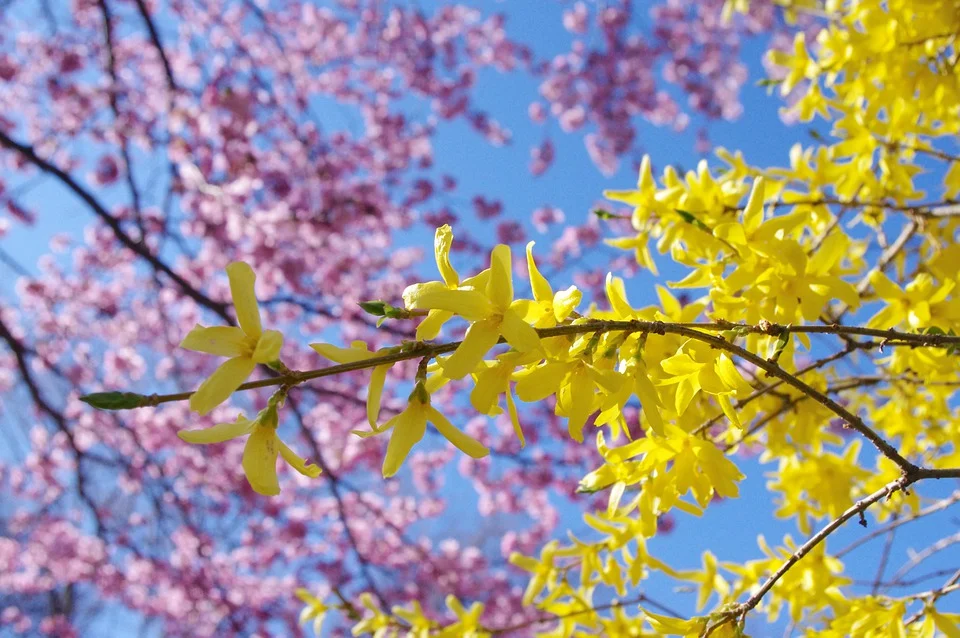
Forsythia - common diseases and pests
Leaf blotches are the most common issue a forsythia plant might suffer from. Small brown spots appear on the leaves. The round blotches get dry after some time. But if they are extensive, whole leaves dry up and fall off. If you notice this problem, use a special product purchased in a gardening store. Removing the issue is important, as it might spread onto other plants in your garden. If that happens, the problem gets much harder to solve.
Where to buy a forsythia?
A forsythia plant can be purchased in most gardening centers. It’s a popular plant, especially before Easter. During this time, it can be found even in supermarkets.
How much does a forsythia plant cost?
A forsythia bush is not the most expensive plant. A sprout costs about $10. The prices differ, depending on the seedling’s size and type, as well as the season. Regardless of the rarity of pink varieties, they typically cost as much as yellow ones.
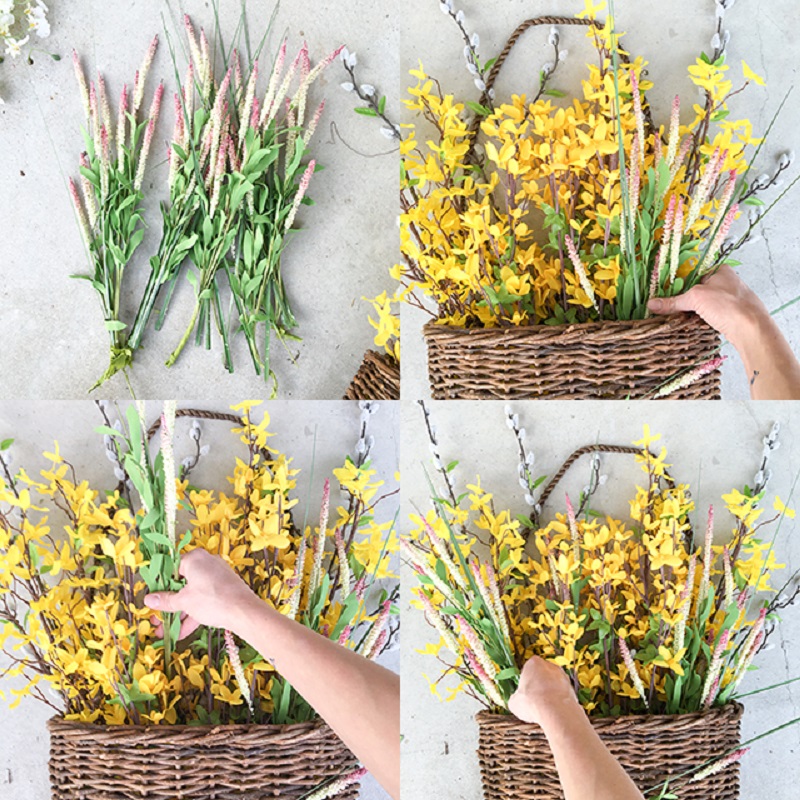
📍 When does forsythia bloom?
Forsythia is a popular shrub, often grown in gardens. Forsythia is most associated with spring. That's when the plant develops many tiny flowers.
📍 When to plant a forsythia shrub?
You can plant a forsythia two times a year. Early spring is the first suitable season, while autumn is the other. These aren't random dates - that's when the ground is wet enough, so the plant has the best start. When planting a forsythia, make sure the hole is at least twice as wide as the pot in which you brought the plant.
📍 When to trim forsythia bushes?
You should trim forsythias regularly, but only after the plants stop blooming. It's typically the end of April or the beginning of May.
📍 How fast does a forsythia grow?
Forsythia needs some time to take root in the ground - which typically lasts up to three years. After this time, it begins blooming. The shrub is over a dozen centimeters taller every year.
Featured articles




